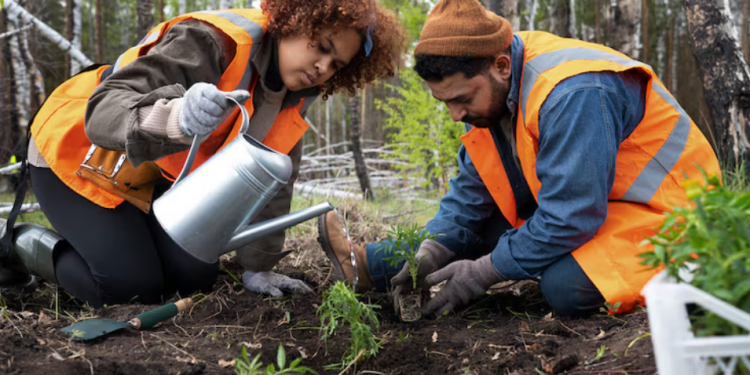Erosion is one of the most persistent challenges faced by construction projects, property owners, and developers. When soil is displaced by wind, rain, or human activity, it can lead to sediment runoff, environmental damage, and costly repairs. That is why professional Erosion Control Services are essential for maintaining site stability and protecting surrounding ecosystems. By implementing proper erosion control measures, construction teams can safeguard the land, ensure regulatory compliance, and promote long-term environmental sustainability.
Understanding the Importance of Erosion Control
Erosion is a natural process, but construction activities often accelerate it. Clearing vegetation, grading land, and disturbing the soil surface make sites more vulnerable to runoff during rain or wind events. Without effective controls in place, sediment and pollutants can wash into nearby waterways, harming aquatic life and disrupting natural drainage systems.
This is where erosion control becomes essential. Erosion control involves a series of methods designed to stabilize soil and prevent sediment from leaving the project site. These techniques protect the land, prevent water contamination, and help maintain the structural integrity of nearby roads and properties. More importantly, they ensure compliance with environmental regulations set by local and federal authorities.
Common Erosion Control Techniques
There are many proven strategies used to prevent and manage soil erosion. Professional Erosion Control Services typically combine multiple approaches to address the specific needs of a project site. Some of the most common methods include:
Silt Fences: These temporary barriers are installed along slopes or drainage areas to capture sediment-laden runoff. They are especially effective for short-term projects and newly disturbed soils.
Erosion Control Blankets and Mats: These biodegradable materials are placed over exposed soil to protect it from rainfall impact and wind. They also help vegetation establish more quickly, further stabilizing the surface.
Hydroseeding: A popular technique that involves spraying a mixture of seed, mulch, fertilizer, and water over bare soil. This encourages rapid plant growth and prevents erosion by binding the soil together.
Sediment Basins: These are small holding areas that capture runoff and allow sediment to settle before water is released downstream. They are often used on larger construction sites or areas with steep grades.
Mulching: Applying mulch to the soil surface reduces the impact of rainfall, helps retain moisture, and supports vegetation growth.
Each of these solutions plays an important role in reducing erosion, and when combined strategically, they create an effective system for long-term soil protection.
The Benefits of Professional Erosion Control
Partnering with a company that specializes in erosion control offers a range of benefits beyond just soil stabilization. Professional services ensure that every aspect of erosion prevention is handled properly—from initial site assessment to ongoing maintenance.
By using advanced materials and proven methods, professional teams can prevent soil displacement before it becomes a problem. This not only protects nearby properties and ecosystems but also helps developers avoid costly fines associated with noncompliance. Furthermore, effective erosion control improves the appearance and functionality of the construction site, making it safer for workers and more sustainable overall.
How Trinity Ensures Effective Erosion Control
Trinity Industrial Services provides comprehensive Erosion Control Services designed to meet the needs of construction projects across different industries. Their team of experienced professionals understands that every site has unique challenges. They assess soil conditions, project scope, and environmental risks before developing a tailored erosion control plan.
Trinity uses a combination of innovative techniques and high-quality materials to prevent soil loss, manage runoff, and ensure compliance with local and federal regulations. Their proactive approach helps clients maintain safe, environmentally responsible job sites while minimizing delays caused by weather-related issues or regulatory concerns.
By integrating erosion control into the early stages of a project, Trinity helps developers save time, reduce costs, and protect valuable land resources. Their dedication to sustainable practices reflects their commitment to both client success and environmental stewardship.
Building with Sustainability in Mind
Erosion control is more than just an environmental requirement—it is a vital part of responsible construction and land development. With the help of expert Erosion Control Services, contractors and property owners can prevent sediment loss, protect natural resources, and ensure long-term site stability.
Trinity continues to lead the way in sustainable construction solutions by offering reliable, efficient, and environmentally conscious erosion control strategies. Their expertise ensures that every project contributes to a safer and greener future, proving that progress and environmental care can work together for the benefit of all.















